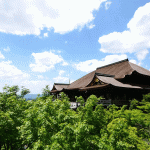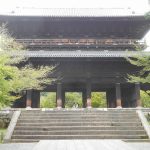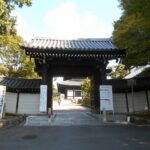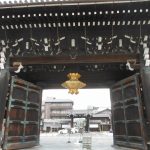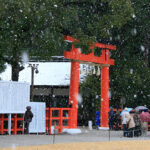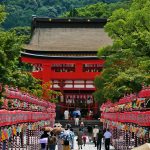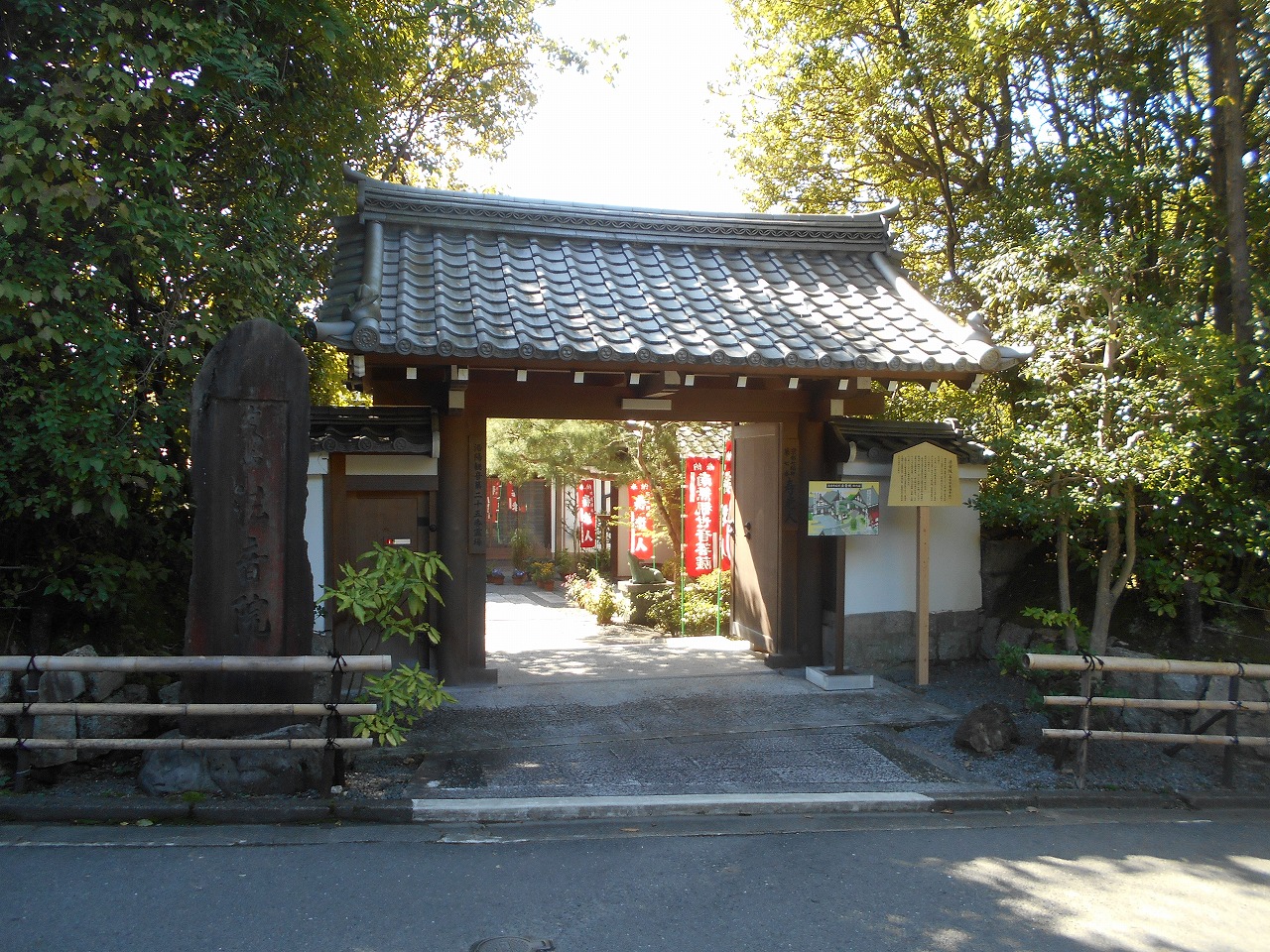
ページの目次
Sennyu-ji Temple(泉涌寺)
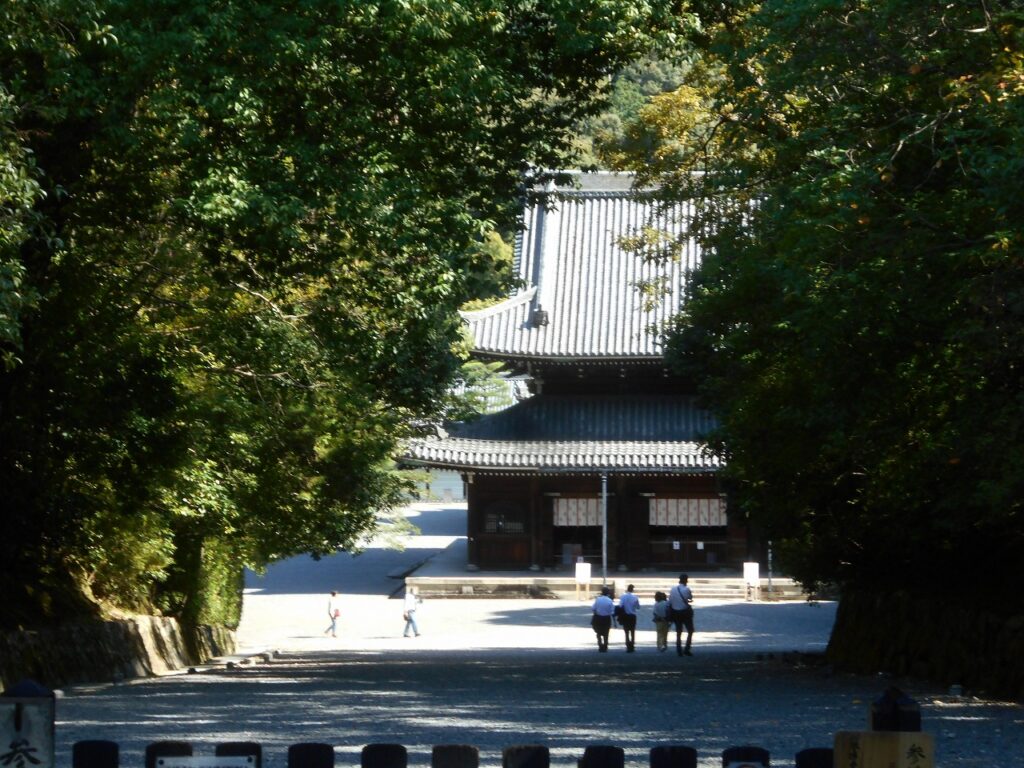
1. Location-Access
This temple is located at the foot of Tukinowa-yama Mountain in the south-eastern of Rakunan Area in Kyoto ,near the Sanjyusanken-do and Tofuku-ji.
It takes 10 minutes by city bus #202 from Kyoto sta. to Sennyuji-michi, 7-minute walk.
(この寺は、京都市南東、洛南エリア月輪寺山の麓で、三十三件堂、泉涌寺の近くに位置している。
市バス#202系統 京都駅(約10分)→泉涌寺道(徒歩7分) )
2. Who was this temple built ?
1) This temple is the lead temple of Sennyu-ji Temple group of Singon Sect of Zen Buddhism, the principality is Syaka Nyorai, Amida Nyorai and Miroku Nyorai.
(この寺は、真言宗泉涌寺派の総本山で、本尊は釈迦如来、阿弥陀如来、弥勒如来である。)
2) This temple was established by Koubou-Taishi as a Hourin-ji. Afterward, it is said that Tikiwa-Taishi, Shinjyo who returned to Japan from Sou in 1218, rebuilt this temple. He changed to the name as Sennyu-ji Temple because water springed up from the corner the temple.
(この寺は法輪寺として、弘法大師により創建した。後に1218年に宋から帰朝した月輪大師
俊芿が再興し、その時、寺地の一角から清水が湧き出したことから、寺名を泉涌寺に改めたと言われる。)
3) This temple centered ground the Ritsu Sect, as afour sect place of enlightenment combining the Tendai Sect, Shingon Sect, Zen Sect and Pure land Sect.
(この寺は、律宗を中心として、天台、真言、禅、浄土の5宗兼学の道場として栄えた。)
4) Then this temple has been supported by various Emperor and Imperial House, and prosperous as the brave of Imperial House. It was seriously believed by both Courtier and Samurai families such as Emperor Gotoba, Emperoe Juntoku, Gotakakura-in, Houjo Masako and Houjyo Yasutoki.
(以後、歴代天皇、皇室から厚いサポートを受け、皇室の御香華院として栄えた。後鳥羽上皇、順徳天皇、後高倉院、北条政子、北条泰時など、公家・武家の両方から篤く信仰された。)
5) Each Emperor from the north-south Dynasty to Azuchi-Momoyama period, and the Emperor and Empress drom Emperor Gojyousei to Emperor Koumei, were funerals here and were enshrined at mountain ridge.
(南北朝から安土桃山時代における諸天皇、江戸時代の御陽成天皇から孝明天皇までの歴代天皇・皇后の御葬儀は泉涌寺で行われて山稜に設けられている。 )
3. What is this temple famous for ?
1) Midera 御 寺
① As an Imperial bodice, Midera was held on the funerals of many Emperors and is called”Midera” from a deep relationship with the Imperial Family.
(数多くの天皇の葬儀が行われ、皇室との深い関わりから御寺と呼ばれている。明治時代の神仏分離政策により、明治以降、天皇の葬儀が無くなった。)
② In this temple, it arranged many sub-temples and central temple buildings with Daimon, Buddha Hall, Relquary Hall. There are Reimeiden and Gozasho enshrined the reverence for Emperor Tenchi and after Emperor Kanmu.
(山内一円に塔頭寺院が立ち並び、大門、仏殿、舎利殿を配した中心伽藍がある。また、桓武天皇以降の御尊牌をお祈りする霊明殿、御座所など建物がある。)
2) Youkihi Kannon-do 楊貴妃観音堂(重要文化財)
The Yokihi Kannon statue is also famous. Yokihi was a Chinese Emperor’s wife and was known as a most beautiful woman. There is a legend that the Emperor had this statue made to remember the by after she han passed away.
(楊貴妃観音像は有名である。楊貴妃は中国の皇帝のお妃で絶世の美女として有名で
ある。お妃に先立たれた皇帝が妃を偲んで作らせたと伝承がある。)
4. What is highlight ?
1) Daimon 大門(重要文化財)
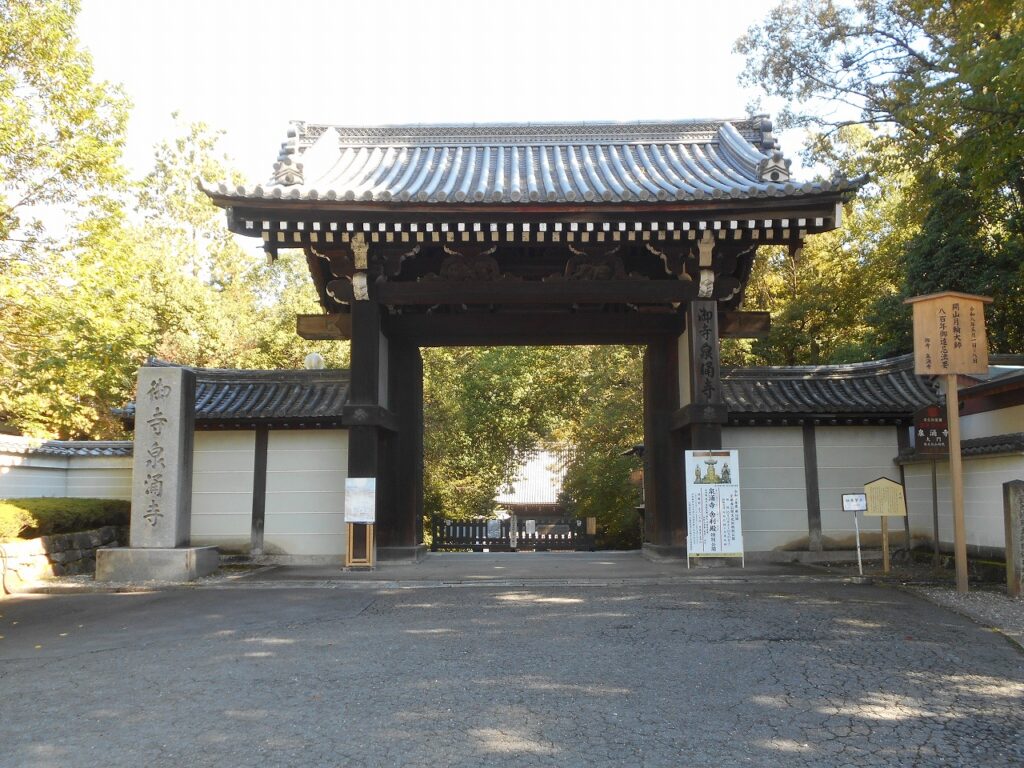
In Edo period, Daimon was relocated from Imperial Palace and is called “Higashiyama-mon”.
(京都御所の内裏にあった門を江戸時代に移築したもので、東山門と呼ばれる。)
2) Kudari Sando 下り参道
There is the main hall on passing through Daimon. It is a rare creation called “descending approach”. We can look down on the whole temple area from up here at the main gate. Sennyu-ji has a lot to do with the Imperial Family. Some of these buildings were moved from the Imperial Palace.
(大門を潜って下った所に本堂があり、「下り参道」と珍しい作りである。門から先が下り坂で境内を見渡せる。ここの泉湧寺は皇室とゆかりが深く御所から移築された建物が多い。)
3) Butsuden(Buddha Hall) 仏殿(非公開) 重要文化財
Butsudan was burned down by Ounin war but was rebuilt by Tokugawa Shogunate 4th Ietsuna in 1668. There are the third Buddha representing Present, Past, Future in altar.
Nirvarna painted by Unkei, which is drawn to Buddha from ceiling to floor, is published in 14-16 of Spring.
(応仁の乱でほとんど焼失し、1668年徳川4代将軍家綱により再建された。仏壇内陣には左から現在・過去・未来を表す三世仏がある。お釈迦様が天井から床まで描かれている運慶作「三尊仏」の涅槃図が公開される。
4) Syariden(Reliquary Hall) 舎利殿/鳴き龍
A feast is a bone of Buddha and Buddha’s shrine is enshrined. “banryu-zu” which a dragon was painted by Tankyu Kano, is drawn on the ceiling. Clapping hands at specific location causes vibrations which have led to it being referred to as the “Raring Dragon”.
In 1228, Priest Tankai brought home a Feast and Tsutenten statue,Mooncap from Sou.
(舎利とは仏様の骨のことで、仏牙舎利が祀られている。狩野探幽作「幡龍図」が天井に大きな龍が描かれていて、特定な場所で手を打つと反響するため、「鳴き龍」と呼ばれる。
1228年、湛海律師が舎利と韋駄天像・月蓋長者像を宋朝から持ち帰り祀っている。)
5) Gozasyo 御座所
In 1818, Gozasyo was relocated in reconstructing Reimeiden with living room for Emperor and Imperial Family. The garden with Zuicho petal illustration painted by Kano Eiden, as the throne space is getting higher.
No wonder there are so many beautiful buildings in this temple. The Gozosho palace in the back is one of them. It has beautiful screen paintings and a garden.
(天皇や皇族の居室で、1818年霊明殿再建に伴い、移築された。王座の間は一段と高くなっており、障壁狩野永缶作、瑞鳥花弁図」である御座所庭園は、見ごたえの紅葉が楽しめる。
確かに立派な建物が多い。奥にある御座所もその一つで、優雅な障壁画や庭園がある。)
6) Reimeiden 霊明殿(通常非公開)
Imperial portrait and mortuary tablet was enshrined in 1882. They were burned down and rebuilt with the intention of Emperor Meiji.
(歴代天皇・皇后の御真影や御尊碑が祀られている。1882年、諸失後、1884年、明治天皇の意向で再建された。)
7) Chokusi-mon 勅使門
Chokushi-mon was rebuilt in 1845, late Edo period and is opened on visiting Emperor family messenger.
(江戸時代後期1845年再建され、天皇や皇族の勅使が寺を訪れた際、開閉される。)
8) Kaizan-do 開山堂(重要文化財)
There are Muhoto towers enshrined successive elders around here, inside Muhoto tower enshrined Syonjyo-Tiahi.
(周囲には歴代長老を弔う無縫塔、内部には俊芿律師を弔う無縫塔が祀られている。)
